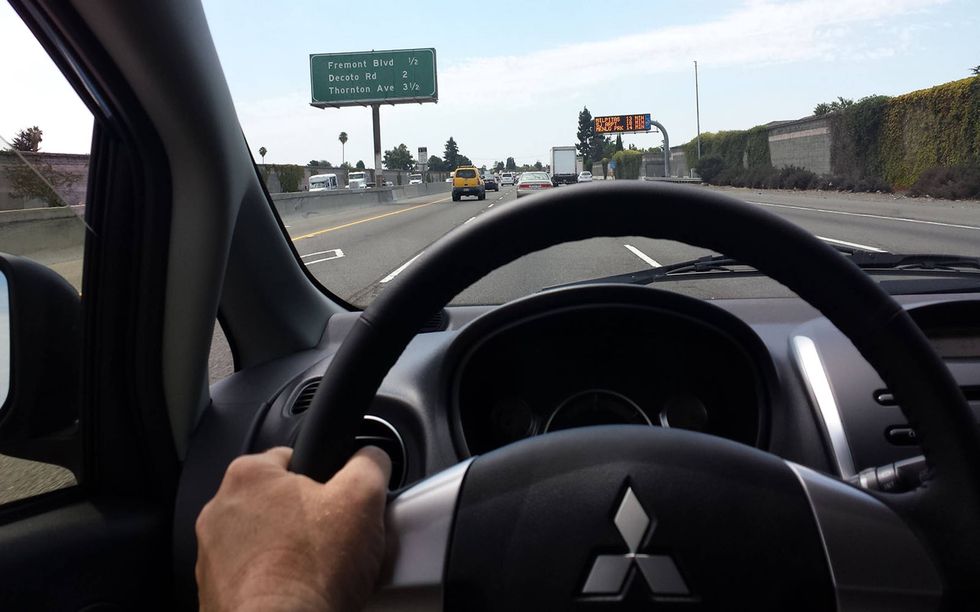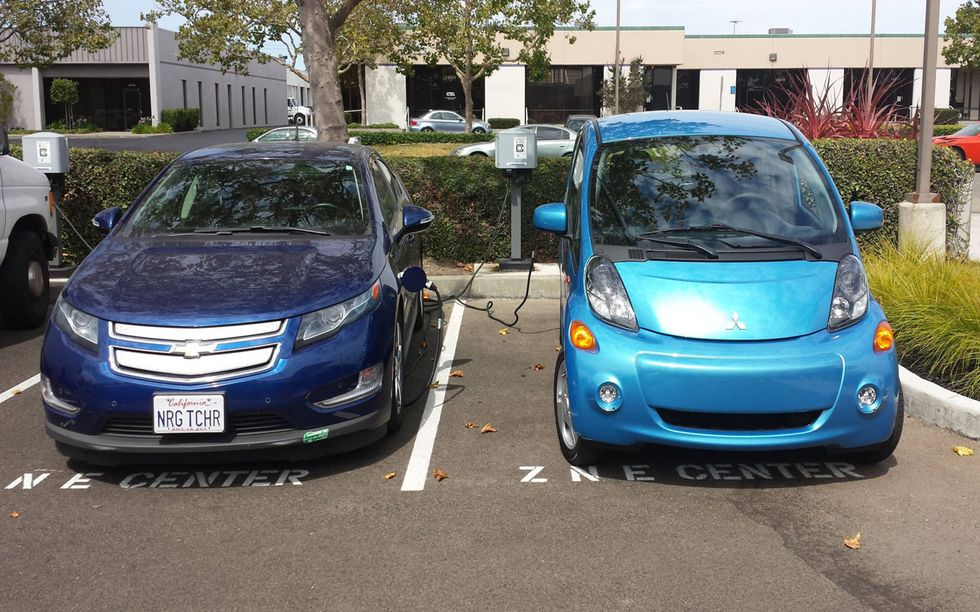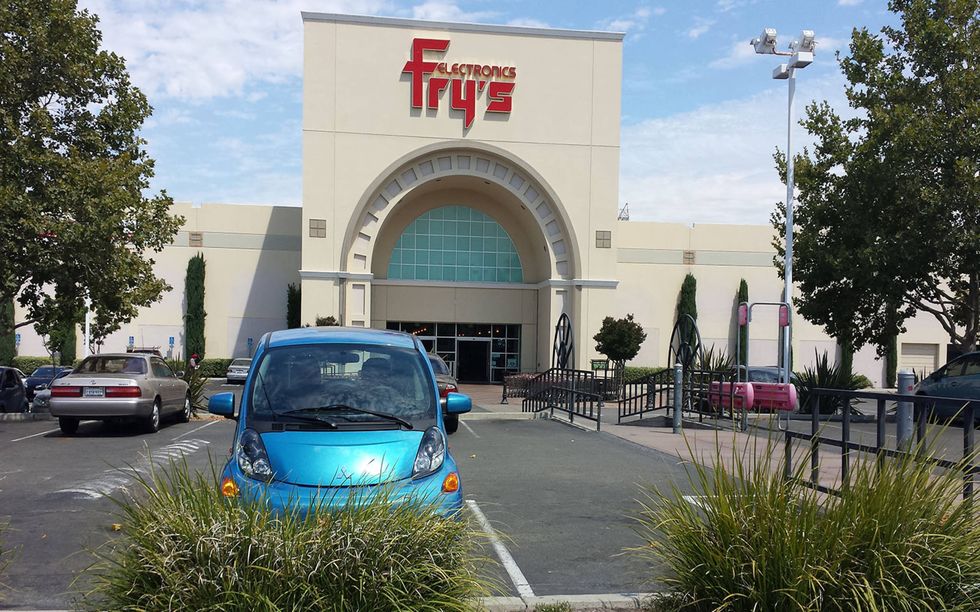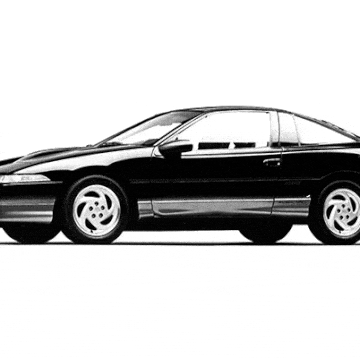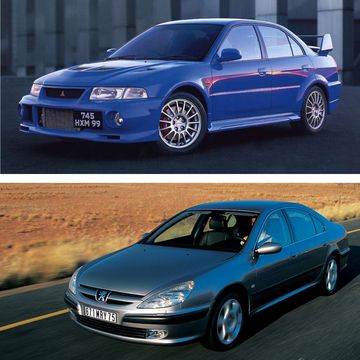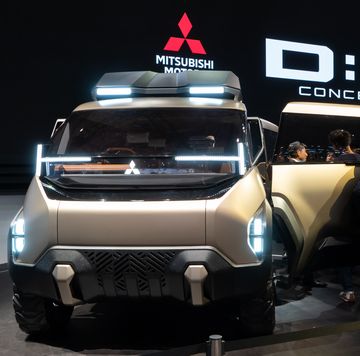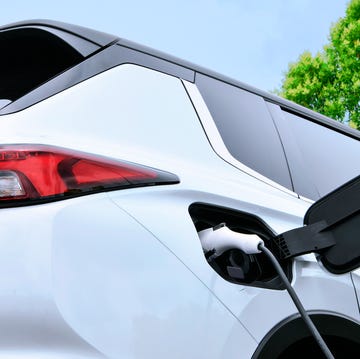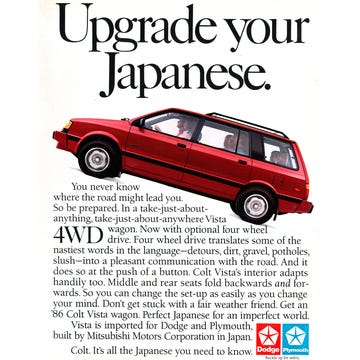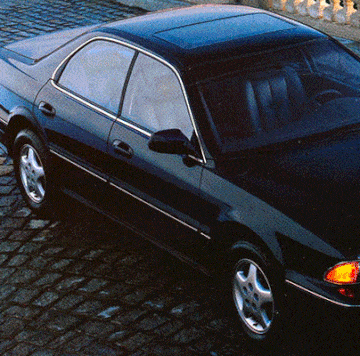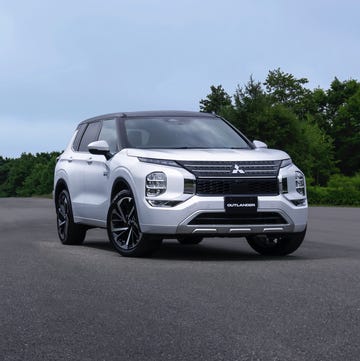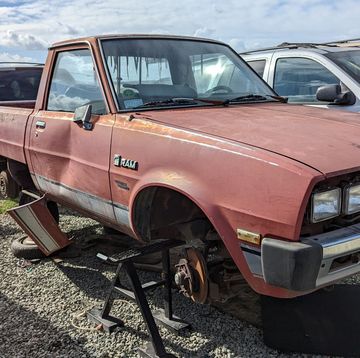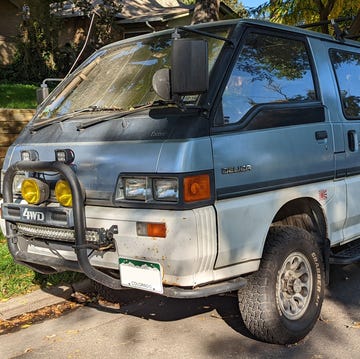In the Race Organizer Review series, your Race Organizer travels the country with the 24 Hours of LeMons Traveling Circus in my role as Chief Justice of the LeMons Supreme Court, putting various new vehicles through the real-world punishments meted out by the itinerant race organizer's lifestyle. In recent months, we've seen the Chevy Sonic RS in Illinois, the Subaru Impreza 2.0i Sport in Utah, and the Chrysler 300 SRT in New Jersey. This time, though, your Race Organizer decided to eschew internal combustion entirely for a pair of California trips, opting for cars at opposite ends of the EV price spectrum: the Mitsubishi i-MiEV ES and the Tesla Model S P85+.
Growing up in the San Francisco Bay Area, I was always culturally ready to approve of electric cars, but the reality of those cars -- say, the Sebring-Vanguard Citicar, which was one of the best EVs you could buy when I was a kid -- made it seem that the electrically fueled highways of the future would be as miserable as a ration of cold groats in a communal kitchen in 1952 Vladivostok. Now we've finally got some real cars with batteries instead of fuel tanks, but I was skeptical when I agreed to try driving the Mitsubishi i-MiEV on a trip to my old stomping grounds. I half expected to be losing stoplight drag races to Mitsubishi Fuso box trucks and white-knuckle searching for charging stations as the lights dimmed and the car groaned to a halt. In fact, the i-MiEV turned out to be a perfectly functional little urban commuter with an honest 60-mile range.
I picked up a marine blue metallic i-MiEV at the Oakland Airport, and its charge-o-meter was showing that I had about 45 miles of range available. Since I would be staying at my parents' place on The Island That Rust Forgot, about 2 miles away, I wasn't too anxious about ending up stalled in the middle of an intersection, horns blaring and fists shaking from all sides… but I knew I'd feel better with a full charge.
While you can charge the i-MiEV very quickly -- an 80 percent charge in 30 minutes, according to Mitsubishi -- at a CHAdeMO Level 3 charger and reasonably quickly at a 240VAC charger (which is what most i-MiEV owners install at their homes, presumably), you can also use the supplied adapter and plug the thing into a plain old, garden-variety 120VAC household three-prong outlet. At the 12-amp setting, you can get a full 62-mile charge in about 14 hours via this method. So, I plugged the charger into an outlet at the parents' place… and discovered that the 1930s wiring in the 1880s Victorian of my upbringing didn't please the brain of the i-MiEV's charging adapter, and it flashed the red FAULT light in disapproval of my sub-par current. After obtaining a longer extension cord (yes, a 12-amp-rated cord), I was able to reach an outlet on a newer circuit and begin charging.
Once the car was topped off, I figured the best test would be a long drive on The Dreaded Nimitz Freeway. In true geeky fashion, I opted to drive the 26 miles from Alameda to the Fry's Electronics in Fremont, where I would expend my limited reserve of Male Shopping Energy (MSE) on futuristic hardware of some sort.
Getting onto the freeway, I found that the the i-MiEV drives much more like a regular car than like a miserable hair-shirt-mobile for the environmentally guilt-ridden. Inside, it feels like one of the better subcompacts of the late 1980s (say, a Toyota Tercel EZ), with its flat, simple seats and unapologetically long-lasting hard plastic surfaces. The ride is on the bouncy side, but it has plenty of electric-motor torque and has accelerates nicely even at highway speeds. Keeping up with California's frighteningly aggressive-yet-inattentive drivers and their way-over-the-speed-limit-while-texting-and-applying-makeup antics was easy for the i-MiEV, but the numbers on the range-o-meter were plummeting more quickly than the miles were passing.
I'd done the research for fast-charging stations on my route (this being the San Francisco Bay Area, they were easy to find) and so I left the freeway and found this two-car 240VAC setup in the parking lot of an electrical-workers' apprenticeship center. One was occupied by a Chevy Volt, but 20 minutes at the other gave the i-MiEV enough juice for me to keep up with the (psychotic) flow of traffic on The Dreaded Nimitz. It was comforting to know that I had charging options like this one along my route.
Once I reached my destination, it occurred to me that nobody had paid the slightest bit of attention to this funny-looking car, on the freeway, on surface streets, or in parking lots. It had working air-conditioning, a sound system that played the MP3s on the USB drive that always travels with me, and a not-weird-at-all driving experience.
The MSRP of this car with destination charge is $23,845, but with the $7,500 federal tax credit plus state rebates (and the incentives offered by no-doubt-eager-to-move-inventory Mitsubishi dealers) the actual out-of-your-pocket price is far less. The i-MiEV would be a poor choice for anyone wanting to do long highway commutes, but for a short urban commute -- particularly one that involves a difficult street-parking situation -- it makes a great deal of sense. You charge it overnight at your house, drive it to work (where you might be able to plug it into a 120VAC outlet), then drive it home. This car makes so much sense, in fact, that I'm considering getting one for my wife's downtown-Denver commute.
Later, I took the car across the San Francisco Bay Bridge so that I could get a Mission burrito fix, and found that it gets a bit wander-y in high winds at freeway speed -- not dangerously so, but you need to stay alert. Once there, I met up with a couple of friends and took them for an electric-powered drive up and down some of the steepest hills in the city. While the i-MiEV doesn't give you much of a jackrabbit start off the line (I suspect that the engine controller refuses to apply full power to the motor, no doubt as part of a don't-break-driveline-parts strategy), it powers up ridiculous grades with 700 pounds of human cargo aboard like a '69 Olds Cutlass I once owned. Even the guy in the back seat didn't feel cramped.
If you're opposed to electric cars for philosophical reasons (as many are), then you will hate the compromises you get with the i-MiEV, e.g., limited range, limited luxury, goofy-looking exterior, recipient of government incentives, appeal to transgendered vegans, etc. If you're a cheapskate with a short commute to a place with difficult parking, this may be the car for you.
Technically speaking, my i-MiEV experience didn't involve any racetracks and thus was not a true Race Organizer Review. However, I made up for that lack a few weeks later, when I came back to California, picked up a Tesla Model S, and drove it to my job at the biggest endurance road race in history.
I'm just going to cut to the chase here and say that the Model S with the P85+ drivetrain is the best car I've ever driven, full stop. Even if it ran on the blood of endangered snow leopards instead of electricity, I would still feel the same way. I try to be cynical about such things, but now I understand completely how my friends over at Motor Trend felt compelled to give it that award, even knowing that such a decision would cause more outrage than the COTY-ization of the Chevy Citation and Renault Alliance combined.
The first indication that this car is not just another minor incremental step in 128 years of automotive design came when I got behind the wheel and encountered this massive touchscreen LCD display. No switches, buttons, dials, indicator lights -- all that stuff is gone. No twirling a menu knob or scrolling through endless gibberished-up menus here; if you want to put a Web browser in the top half of the display and the navigation screen in the bottom, you can figure out how to do it in seconds. And unlike most other in-car touchscreen displays, which appear to have been designed around 1994 hardware and seem to have about a tenth of the computational muscle of a low-end Shenzhen Special smart phone, there's no maddening delay when you choose an option. And, of course, since LeMons racing in California is packed with Silicon Valley tech workers (for example, the guys who built built the Diesel 911 work at Facebook), I ran into a LeMons racer who designed the Tesla's touchscreen interface at his day job.
I picked up the Tesla at the Oakland Airport, just as I'd done with the i-MiEV, and found that it came with the batteries about half-charged. To get the Model S up to its full 271-mile range, I'd need to get it to a Tesla Supercharger station at some point on its 150-mile journey to Thunderhill Raceway Park. I planned to spend a few hours with my relatives before hitting the road for the track, so I found the 120VAC adapter plug and hooked the Model S up to household power to add a few extra miles of range… which turned out to be literally just a few extra miles of range. Plain old wall-outlet power is not the way to charge a Model S, unless you're very, very patient.
Having added single-digit miles to the car's range via the 120VAC outlet at my parents' place, I told the navigation unit to find me a Supercharger station on my route to Thunderhill and, an hour or so later, ended up in a shopping mall parking lot in Vacaville. Several Model Ss were charging when I arrived, and the owners were leaning against their cars' fenders and chatting. I plugged in the cable and got back in the car to watch the charging progress on the display screens.
The Supercharger starts off charging very quickly, to the tune of about 170 miles' range in a half-hour. Going by the numbers on the display in the photograph above, the Supercharger was feeding more than 75,000 watts into the car. It takes longer than a fill-up of a gasoline-powered car, granted, but just about all Tesla owners will have a 240VAC charger at home that will have the car fully charged and ready to drive 271 miles each morning. During the charging process, I played with the audio system and found the one real annoying detail of the car's interface: it will not read music files from a USB drive (I always carry a tunes-stuffed 16GB drive on my keychain), so you must use a Bluetooth-connected smart phone or an Apple product plugged into the USB connector in order to play your music. There's no telling what confluence of licensing disputes and/or agreements with other companies led to this setup, but I'm sure a future software update (delivered wirelessly to the car, of course) could enable the use of music files on flash drives.
Getting back on the highway, the usual Bay-Area-sprawl-to-Sacramento-sprawl commute traffic on I-80 had finally diminished enough that I could get the Model S above a stop-and-go 19 mph, and ho-lee hell this car is fast! I've driven some properly insane big-cubic-inch Detroit drag cars, stuff optimized for 11-second quarter-mile passes and burnout spectaculars in the Circle K parking lot, and those cars don't feel like they pull as hard in the 50-to-90 range as the P85+ Model S. Stomp on the throttle and there's no millisecond delay for fuel-air mix to get stuffed into cylinders, no futzing around with gear changes, just an instantaneous, eyes-going-out-of-focus leap; it's one thing to hear some pocket-protector-wearing nerd drone on about electric motors delivering 100 percent torque at zero RPM and another thing altogether to experience this phenomenon in person. Plenty of internal-combustion cars boast crazier raw performance numbers than the P85+, but that brutal electric torque is addictive once you've experienced it.
The rest of the drive went well, with the quietness of the electric drivetrain and low-stress driver ergonomics in the Model S keeping fatigue low. The next morning, I zoomed over to the track from my hotel in lovely Willows, Calif.… and was presented with the keys to this gorgeous 1935 Ford pickup by LeMons racers who work at Alloy Motors in Oakland. Yes, an excellent Judgemobile for my use as Chief Justice of the LeMons Supreme Court. Suddenly, unburnt-hydrocarbon-belching internal combustion, foam-rubber crumbs from junkyard seats stuck to my clothes, and finger-slicingly crude ergonomics seemed like a fine idea, and the appeal of the Model S waned a bit for the time being.
Since I'd be using the Alloy Motors Ford to get around the Thunderhill Raceway facility, I decided to try to let the Tesla soak up some watts during my workday. I talked LeMons Legend Chris Overzet into letting me plug the car into the 240VAC jack at his RV space, which gave the Model S a full charge in five or six hours. No range anxiety for the rest of the weekend!
However, my fellow Race Organizers -- who are, as very jaded former automotive journalists, extraordinarily cynical about cars and the automotive industry in general -- insisted that I give them rides in the Model S, and each one was awestruck by how good this car is. Fast, comfortable, driver interface a couple orders of magnitude better than the competition (and likely to get better still, thanks to software updates), and a more efficient user of energy than internal-combustion machinery, the Model S P85+ is a fundamentally superior machine. True, the price tag on the car I had was $126,220, thanks to the big premium for the P85+ powertrain, but it's worth it.

